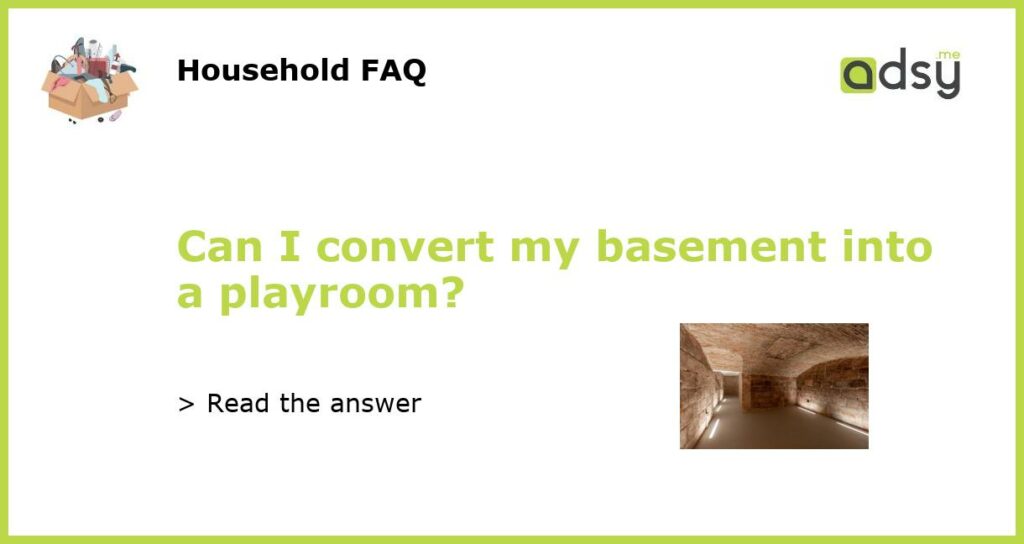Yes, you can convert your basement into a playroom!
Converting your basement into a playroom is a great way to add extra space for your children to play and let their imagination run wild. It can also provide a dedicated space for their toys and activities, keeping the rest of your home clutter-free. However, before you start the conversion process, there are a few factors to consider.
Assess the space and plan the layout
Begin by assessing the space in your basement and determining how you want to divide it into different zones. Consider the age of your children and their specific needs and interests. For example, you may want to create a separate area for activities like arts and crafts, a reading nook, or even a mini indoor playground. Measure the dimensions of the basement and sketch out a plan for the layout. This will help you visualize the final result and make any necessary adjustments before starting the conversion.
Ensure proper insulation and ventilation
Basements can often be damp and prone to moisture problems. Before converting your basement into a playroom, it’s essential to address any potential issues with insulation and ventilation to prevent mold and mildew growth. Make sure the walls are properly insulated and install a dehumidifier to control the humidity levels. Adequate ventilation is also important for air circulation. Consider adding windows or a ventilation system to keep the space fresh and dry.
Create a safe environment
Safety should be a top priority when converting your basement into a playroom. Take steps to ensure that the space is childproofed and free from any potential hazards. Install childproof locks on cabinets and drawers, cover electrical outlets, and secure heavy furniture to the walls. Consider using soft flooring materials, such as foam mats or carpeting, to cushion falls and provide a comfortable play surface. It’s also important to have proper lighting in the playroom, both natural and artificial, to create a bright and inviting space.
Design and decorate to stimulate creativity
A well-designed playroom can stimulate your children’s creativity and imagination. Consider incorporating vibrant colors, educational artwork, and thematic decorations that align with their interests. Create designated areas for different activities, such as a stage for pretend play, a table for arts and crafts, or a cozy reading corner. Incorporate plenty of storage solutions to keep toys and games organized and encourage your children to take responsibility for tidying up after playtime.
Make it versatile and adaptable
As your children grow and their interests change, it’s important to make the playroom a versatile and adaptable space. Choose furniture and storage solutions that can easily be reconfigured or repurposed as needed. Consider using modular furniture that can be rearranged, shelves or cubbies that can be adjusted, or even mobile storage units on wheels. This will allow you to maximize the use of the space and cater to your children’s evolving needs and preferences over time.






